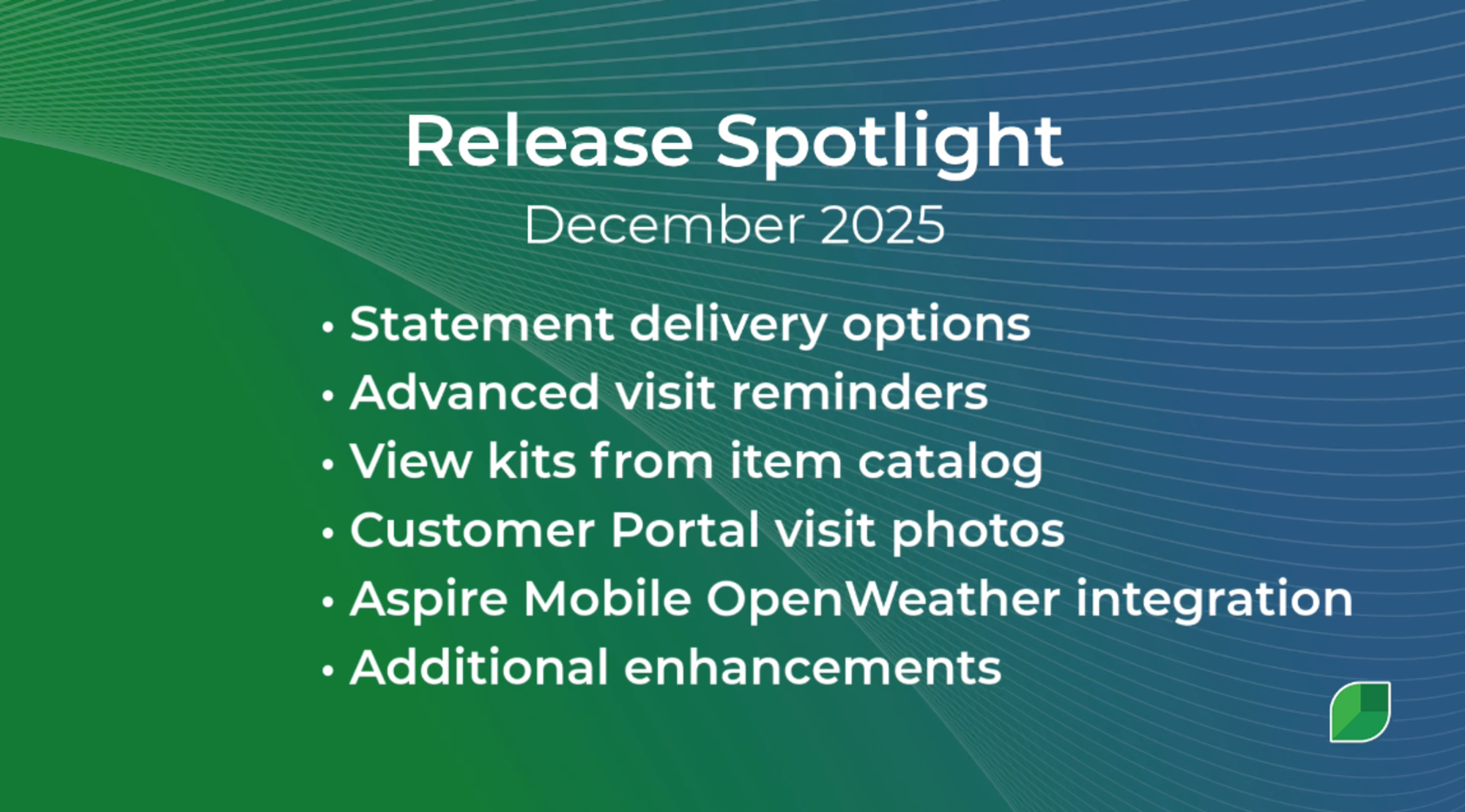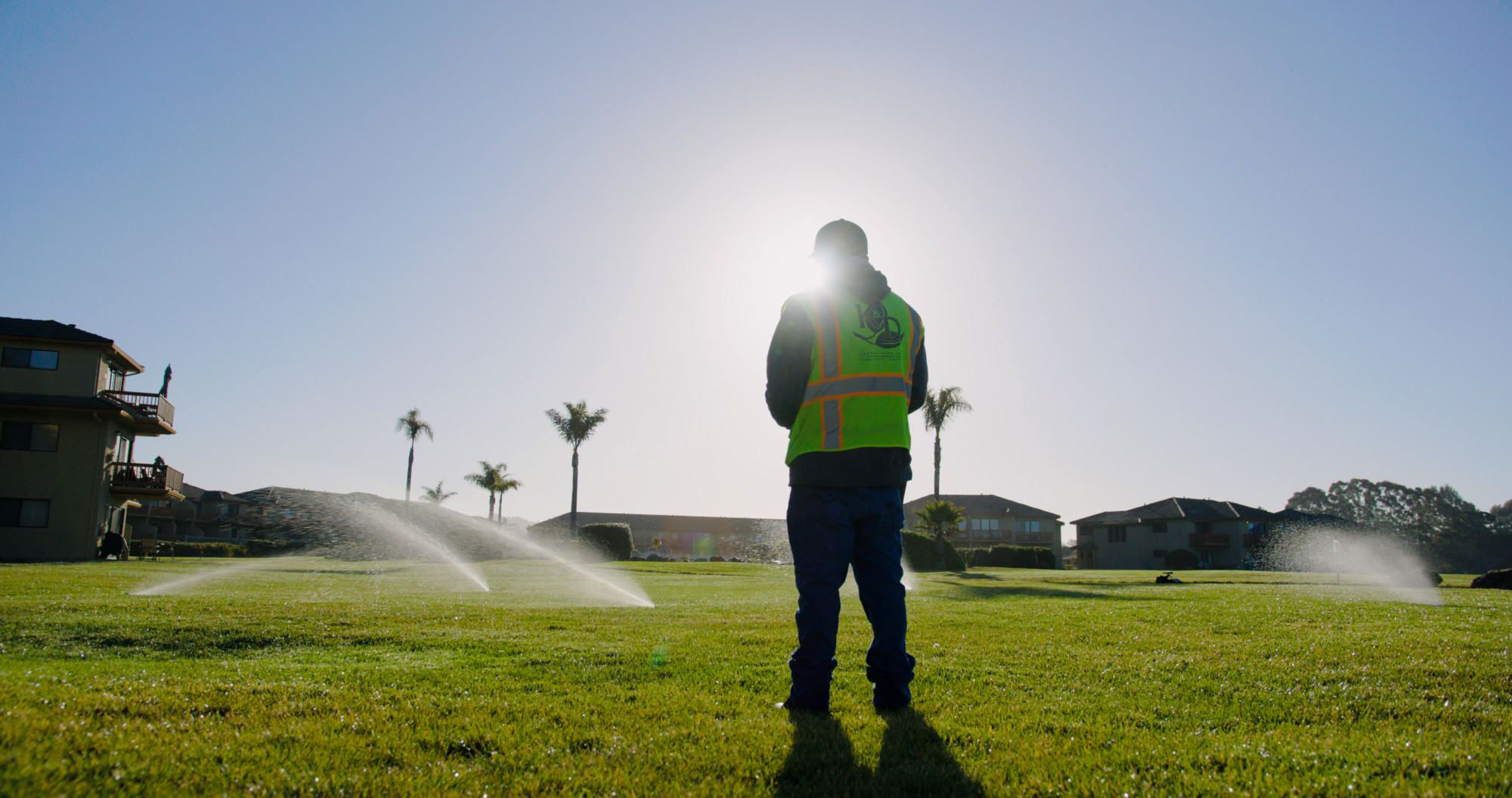Table of Contents
Table of Contents
- Why is advertising important for cleaning businesses?
- What are the best advertising platforms for cleaning businesses?
- 1. Google Ads (PPC – pay-per-click)
- 2. Facebook & Instagram Ads (social media advertising)
- 3. Local Service Ads
- How can you create high-performing cleaning business ads?
- 1. Target the right audience
- 2. Crafting compelling ad copy
- 3. Design attention-grabbing visuals
- 4. Set the right budget & bidding strategy
- What are the most common mistakes to avoid in cleaning business ads?
- 1. Targeting too broad or too narrow an audience
- 2. Using generic ad copy with no clear value proposition
- 3. Failing to track and optimize ad performance
- How can you track & optimize your ad performance?
- How Aspire helps cleaning businesses maximize their ad results
- 3. Local Service Ads
- How can you create high-performing cleaning business ads?
- Like Cory, ensure you select a format that lets you display your core competency.
- 3. Local Service Ads
- How can you create high-performing cleaning business ads?
- Like Cory, ensure you select a format that lets you display your core competency. 3. Local Service Ads
- How can you create high-performing cleaning business ads?
- 3. Local Service Ads
- How can you create high-performing cleaning business ads?
- Like Cory, ensure you select a format that lets you display your core competency.
- 3. Local Service Ads
- How can you create high-performing cleaning business ads?
- Like Cory, ensure you select a format that lets you display your core competency. 3. Local Service Ads
- How can you create high-performing cleaning business ads?
Are you struggling to get leads or new clients for your cleaning business?
You’ve tried to run ads, but all you got were hundreds of views—without a single lead. Sound familiar? Cleaning businesses get caught in cycles of ineffective marketing because:
Your campaign isn’t set up effectively.
You’re not targeting the right people.
Your ads aren’t correctly optimized.
It’s a common challenge for many cleaning business owners. But don’t worry; this guide is here to help you change that narrative.
Here, you’ll learn the different methods to promote your business on platforms like Google, Facebook, and local directories—so the ads bring in leads and clients.
Why is advertising important for cleaning businesses?
In a highly competitive marketing, advertising lets people know your business exists.
Advertising gives you a shot at visibility. The more people see the brand, the higher the chances of them becoming leads or paying customers.
In addition to that, advertising your cleaning business helps:
Build trust and brand awareness
Like most services, homeowners and businesses only hire cleaning agencies they trust or someone they know trusts. Regular advertising builds brand recognition, showing potential clients you’re reliable and professional. Consistent advertising helps people recognize your service and build trust, whether you’re highlighting:
Client reviews
Before-and-after photos
Pics of your team in action
Generate bookings and revenue
Special promotions, such as first-time customer discounts or seasonal deep-cleaning offers, attract new leads and prospects. Running ads highlighting your expertise in deep sanitation or office cleaning brings in leads. Providing new clients with excellent service turns them into long-term customers who refer others, leading to more revenue.
Retain clients
Cleaning isn’t a one-time need; people require ongoing services. By staying active on social media—like sharing post-renovation cleanups or post-event deep cleans—you remind past clients about your services and encourage them to reach out. Advertising also helps with content retention as you stay on clients’ minds.
What are the best advertising platforms for cleaning businesses?
The best platforms to advertise on are the ones where your target audience spends most of their time. Below are the top options.
1. Google Ads (PPC – pay-per-click)
Here’s an example you’ve probably seen before:

Google Ads helps you attract clients or prospects actively searching for your service. You get to bid on relevant keywords related to your business, such as home cleaning services in Ohio or residential cleaning services around me. This ensures your business appears at the top of Google search results.
Google Ads also supports local targeting, ensuring ads reach prospects in your service area. It also has a PPC option, in which you’re charged when someone clicks on your ad.
If you’d like to launch a Google Ads campaign, here are some Google-inspired tips to ensure its success:
Understand your target audience.
Use advanced location targeting options for improved campaign performance.
Leverage frequency capping to prevent ad overexposure to the same users.
Write compelling ad copy.
Choose the right keywords that can encourage interactions and optimize your online presence.
2. Facebook & Instagram Ads (social media advertising)
With the number of active social media users in the U.S. (about 253 million), there’s a 95% chance your target audience is there, too. Connect with prospective customers by leveraging social media platforms like Facebook and Instagram.
These social sites allow you to build the brand’s business page through social media posts. With their paid advertising feature, you can reach people beyond your current audience and generate leads.
All you need to do is set a budget, choose the target audience, and launch a campaign. To maximize this approach, choosing the right ad format is key. Here are some ideas:
Carousels for before-and-after posts.
Videos for proper narration and storytelling.
Images showing branded cleaning supplies or an infographic with cleaning tips.
Testimonials in picture or video formats.
Cory, the founder of CC Residential Cleaning, used a video format for their social media ad, allowing them to showcase their expertise.

Like Cory, ensure you select a format that lets you display your core competency.
3. Local Service Ads
As a cleaning service business, you’d prefer to reach clients within a reasonable driving distance from the office, right?
Services like Yelp and Google local service ads help you do just that—connect with local customers in your service area. Here’s how Google Local Service Ads works:
First, create a business profile where you add the business name, address, phone number, and service types.
Choose an advertising budget.
With that information, Google screens and verifies your business by performing business registration, background, license, and insurance checks.
Once the verification is complete, your ad goes live, and people can begin to call, message, or book an appointment directly.
To ensure a successful marketing campaign, consistently optimize the ads by adding new business photos or customer testimonials and enabling instant messaging.
Wondering how it differs from Google Ads?
Cost: Google Ads runs a PPC model while Local Services lets you set a running budget based on the number of leads you want.
Targeting options: Local Service Ads are tailored for specific area promotion, meaning you’re marketing to people in a service location. Google Ads offers more flexibility, allowing you to advertise local businesses to people in your immediate area and beyond.
How can you create high-performing cleaning business ads?
Whether you decide to run a Google or social media ad campaign, one thing is certain—the ads must be valuable and effective to attract new clients.

Here’s how you can create cleaning business ads that achieve just that.
1. Target the right audience
The first step to high-performing ads is understanding who you want to reach. As a cleaning service, it’s easy to think everyone—homeowners, businesses, or government agencies—needs you.
But that’s not always the case. Different customers have different needs. Harvard Business School Professor Sunil Gupta, says, “While you can try and market a product to everyone, consumers have different needs and preferences. What appeals to one group of consumers may not appeal to another group.”
Picture the times you’ve seen an ad and wondered why you were seeing it. That’s what happens when targeting is off.
To ensure your ads reach the right people, break down your ideal audience into three categories:
The residential market includes homeowners and renters. You must also define their demographics (age group, income, family size, etc.), location, and schedule.
Commercial markets include office buildings, malls, retail stores, restaurants, or schools that require routine cleaning. You must define a specific industry, business size, and location here.
The specialized market encompasses niche sectors like industries, construction sites, or public properties.
Determine which market fits your business by engaging with your current customer base to learn more about their:
Pain points
Preferences
Expectations
This insight will help refine your targeting and create a resonant ad campaign.
Alternatively, use Semrush’s One2Target tool to uncover your ideal audience and ensure you’re targeting the right people. Input your web address, and it’ll show audience demographics, socioeconomic data, and behavior information.
If you’re a new house cleaning business without a website, you can slot in a competitor’s website to get a sense of your audience.
2. Crafting compelling ad copy
Now that you know who you’re targeting, create ad copy that encourages the audience to take action.
A strong ad involves a combination of compelling messaging, such as:
A clear, engaging headline that captures people’s interests and conveys your message. An example is: “Get your restaurant spick and span! Schedule a deep clean today.”
Persuasive copy that highlights your unique value proposition instead of listing your house cleaning services. For instance, “Eco-friendly commercial cleaning that saves costs and saves the planet.”
Trust signals, such as client reviews or satisfaction guarantees, reassure prospects and make them confident about doing business with you.
A call-to-action (CTA) that informs viewers of the next steps, e.g., “Schedule your first free home cleaning today” or “Get a quote now.”
3. Design attention-grabbing visuals
You need strong visuals, like high-quality videos and images of your services or unique cleaning products in action, to evoke the right emotions and build trust.
Ads with high-quality visuals are more likely to drive engagement and conversions. This visual can cover specific steps you follow on a project to show viewers your brand’s unique selling point.
You should also add before-and-after images or visuals narrating clients’ experiences with your brand compared to the competition.
Here’s an example from Sarina Pools, a pool care expert:

They used a combination of video and a before-and-after to promote their service.
To design visuals like this, hire expert videographers or photographers to produce high-quality content. Another option is to partner with content creators or influencers to craft relatable content. This will give you engaging ad creatives and increase your brand’s reach.
4. Set the right budget & bidding strategy
To run paid ads, decide how much you’re willing to spend. You can choose between manual and automated bidding strategies. Here’s how they differ:
Manual bidding controls how much you pay for clicks and bids. It allows you to manage costs but requires constant monitoring. An example is Google Local Service Ads, where you choose a suitable budget for your business.
Automated bidding optimizes bids and costs using AI-driven algorithms based on your goals (conversion, impressions, or clicks). It ensures the budget is spent to help you achieve your advertising objectives. Platforms like Facebook and Instagram use this approach for paid ads.
Manual bidding is ideal for new businesses with limited resources to spend on promotion. However, larger cleaning businesses are better off with automated bidding, as it optimizes the result to their benefit.
What are the most common mistakes to avoid in cleaning business ads?
An ad campaign attracts new leads, brings in clients, and strengthens the brand—but to ensure its success, it’s essential to avoid these common mistakes.
1. Targeting too broad or too narrow an audience
A defined audience is important, but making it too broad or narrow affects your efforts.
Too broad of an audience causes:
Poor return on investment where people who aren’t interested in your service interact with the ad. You see impressions and clicks but zero to minimal conversions because they’re not your ideal clients.
Generic messaging that doesn’t speak to anyone, leading to low engagement and conversions. It’s not tailored to meet a specific interest or need.
Narrow targeting, on the other hand, leads to:
Limited reach. You’d lose out on potential customers who aren’t seeing the ads and fail to identify new client segments.
High cost per acquisition. It can cost you more to convert a client because you’re focusing on a small audience segment.
To find the right balance, conduct detailed audience research and consistently target different audience segments to ensure you reach the right people.
2. Using generic ad copy with no clear value proposition
Your ad copy must speak to the audience, communicating the brand’s value. People should see the ad and understand the offering at a glance.
An ad campaign isn’t the place to write an essay or something generic like: We at Ray’s Cleaning specialize in deep cleaning services for residential and commercial buildings. Hire us today.
That’s boring and looks like a line many other businesses use. To capture attention, get creative and ensure the copy captures your unique selling point.
Sabrina Tretyakova, an ISSA-certified cleaning technician with Fortador USA says, “A unique value proposition is like adding a turbocharged, streak-free shine to your message—it makes your customers stop scrolling and say, “That’s the cleaner for me.”
Your ad must stand out from the others. If you’re not differentiating, you’d be just another bucket in the closet.”
Here’s an example of an ad with a UVP from Dependable Window Cleaning Service:

The ad instantly communicates its offer while using emojis to keep things lively.
3. Failing to track and optimize ad performance
Want to ensure you have an effective ad campaign?
It is key to consistently monitor and improve campaign performance. Tracking your campaign helps you identify what’s working and what isn’t so you can make necessary adjustments for better results.
How can you track & optimize your ad performance?
Leverage analytic tools like Google Ads, Facebook Ads Manager, or Semrush to monitor ad performance effectively.
Most advertising platforms even have an analytics feature, which you can use to track key metrics.
Speaking of metrics, here are key performance indicators (KPIs) to monitor:
Click-through rates (CTR): Number of people who click the link to your landing page.
Conversion: Number of people who click the CTA.
Impressions: Number of views the ad gets.
Engagement rate: Tracking likes, comments, and shares helps gauge the audience’s interest in the ad.
Another way to monitor ad performance is to A/B test ad variations. Here, you create two similar ads but change one key aspect, such as headlines, copy, images, or CTAs, each time.
By running the two ads simultaneously, you can monitor which resonates with the audience and generates leads. A/B testing helps you optimize the ads for better performance, ensuring you invest in the most effective ad.
How Aspire helps cleaning businesses maximize their ad results
A winning ad campaign doesn’t just get views but sales and leads. However, achieving that takes the right strategy, constant optimization, and a data-driven approach.
Aspire’s business management software can take your results to another level:
Cloud-based CRM: Aspire gives cleaning business full sales pipeline visibility, from initial lead to closed contract. Centralized records ensure no prospect is overlooked or forgotten. With the entire sales team having access to the sales pipeline, you can easily build email lists, manage opportunities, and close more sales.
Easy follow-ups: The bulk actions in Aspire let your sales team quickly send emails to recent prospects with just a few clicks.
Targeted email campaigns: Aspire’s Marketing Pro streamlines your marketing campaigns by creating hyper-target audiences from your existing customer list in minutes. It includes templates to help you deliver the right message to the right audiences at the right time. Plus, Marketing Pro enables campaign performance tracking, allowing you to identify which initiatives or messaging drives results.
Job costing & profitability insights: Discover how much revenue a job has generated and compare it with your ad spend to track profitability. Aspire’s job costing feature gives real-time cost tracking data, enabling you to make informed decisions.
Seamless quoting & invoicing: Aspire enables users to generate opportunities in the CRM, which become estimates and work orders as sales are closed and more information is entered. With the customer portal where clients can view invoices, send messages, generate requests, and make payments.
Aspire integrates and enhances every aspects of your cleaning business, from marketing to client management, scheduling, and invoicing. Its all-in-one platform includes customizable dashboards with real-time reporting, giving business owners unparalleled visibility and control over their operations.
Rather than juggling multiple tools, Aspire centralizes everything, streamlining from marketing to operations.
See how it works for yourself—book a free demo with Aspire today!







